I've driven the future of electric cars, and it's massively exciting
The Mercedes-Benz EQS could be a defining vehicle in the electric car revolution. It's likely to be extremely expensive when it rolls off production lines towards the end of 2021, putting it out of reach of the vast majority of motorists, but what it represents is hugely exciting for the future of EVs.
I had the opportunity to drive an early model for a couple of hundred of miles recently, and even though I only had it for less than a day, the EQS makes some clear strides in EV technology.
Generally speaking, advancements in tech are seen at the premium end first, so it's no surprise that the car pushing the boundaries of electric vehicle range and in-car technology is a high-ticket item.
These are the features I can't wait to see filter down the tiers of electric cars over the coming years, and they make me even more excited to see what future – and more affordable – EVs will be able to offer us.
- Mercedes-Benz EQS: everything you need to know
- EV charging connectors: what they are and how they compare
- Everything we know about the Apple Car
Romping range
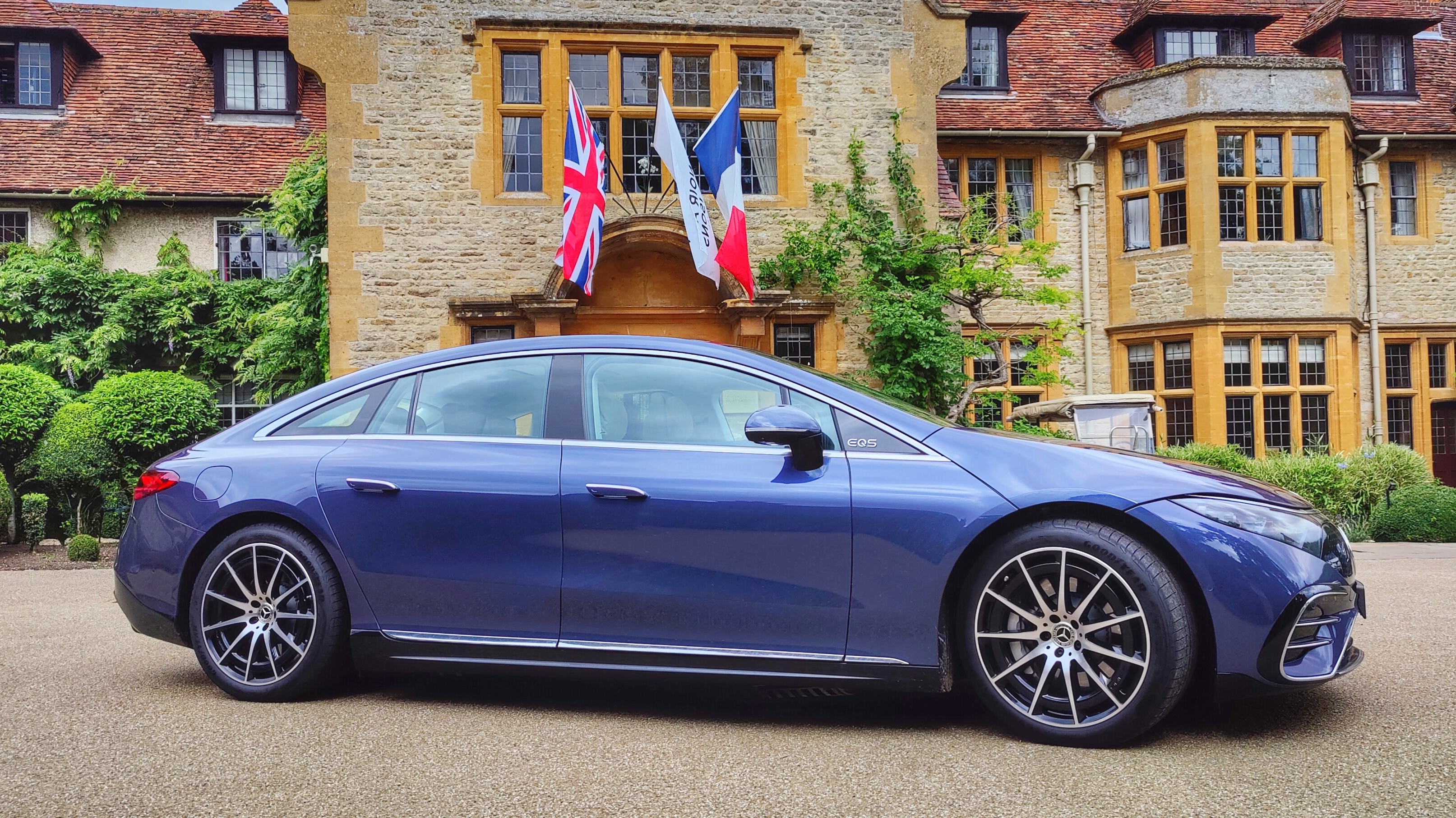
Range anxiety is still very much front and center for those considering making the switch to a fully electric vehicle.
Until electric cars can reliably offer similar range to a full tank of gasoline, they're always going to have an air of restrictiveness about them. Of course, it's not just the range that needs to improve to completely eradicate the anxiety; improvements to charging speeds, and continued efforts to increase the number of fast-charging stations are also needed.
That said, if your electric car can go further on each charge, charging speeds and stations become less of an issue. Tesla is already pushing the 400-mile range barrier according to the official stats for the Model S Long Range (although you're unlikely to get close to this in real-world usage), while Volvo believes it will have EVs offering 550 miles of range by the end of 2025.
However, there's no need to wait years. The Mercedes-Benz EQS is the first mass-produced electric car that reliably offers over 400 miles of range from a single charge. I got behind the wheel of the EQS 450+, which is the longer-range of the initial models, with a billed range of up to 484 miles WLTP.
You'll never get the maximum range quoted by manufacturers (much as your smartphone won't match its official battery figures) in day-to-day use, but I drove 200 miles in the EQS, and the range estimate was showing that there was still over 200 miles left in the 107.8 kWh battery.
Knowing how far I'd driven, and seeing that I still had over 200 miles available, was a new experience for me. It felt refreshing, exciting and, most importantly, reassuring. I could easily get used to this sort of EV range.
The battery is one of the biggest fitted to any EV, which goes some way to explaining the range here, but the EQS has also been designed with the lowest drag coefficient of any production car, which in turn allows for better power efficiency and therefore greater range.
Advances in design and battery tech incorporated into premium cars such as this will, in time, filter down to models across all price brackets, so while we're not going to suddenly see EQS clones from all brands, those learnings will be used to improve vehicle design going forward.
Currently, few electric cars support charging speeds over 100kW, but the EQS 450+ is one of them, with support for up to 200kW charging. Mercedes claims the car can go from 10% to 100% in just 30 minutes using a 350kW supercharger.
It's a bit of a chicken-and-egg situation: we need more EVs to support the faster charging speeds in order to push the provision of more super-fast charging stations, and the introduction of the EQS onto roads in 2021 is an important step in this process.
Sumptuous screens
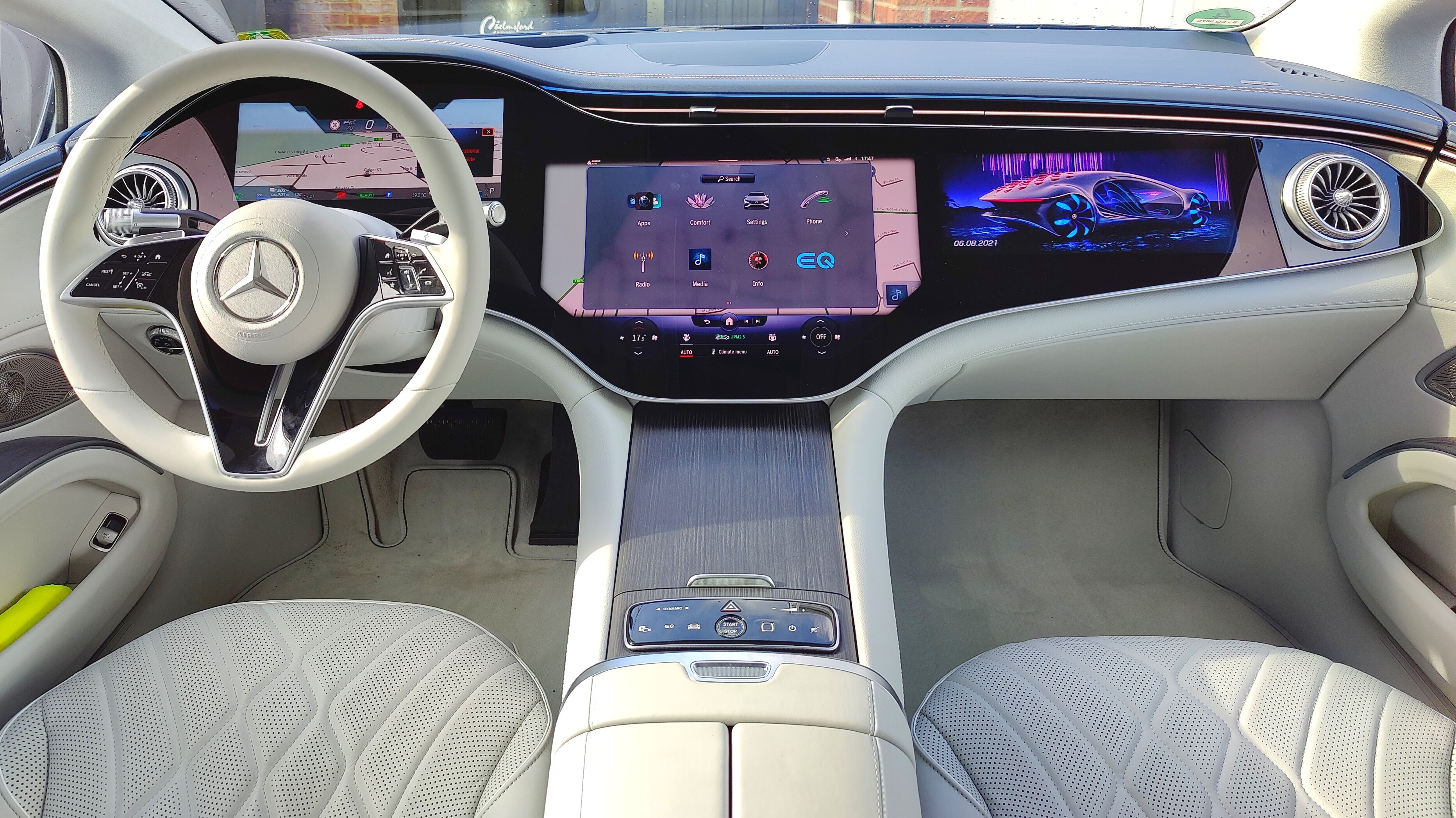
I've been closely following the Mercedes 'Hyperscreen' in-car display since its official launch back at the start of 2021, and while I was looking forward to seeing what it could offer as a driving experience, I was a little skeptical about its design.
Could three separate displays sit comfortably together in one, large expanse of dashboard? Would the whole Hyperscreen unit look out of place in the car? And what about those turbine-shaped air vents – unifying or unseemly?
Entering the cabin for the first time, and positioning myself in the driver's seat, I found the Hyperscreen to be a modern, minimalist offering which had the right balance of futuristic intrigue and premium refinement.
The oversized central display is one of the biggest around – only Tesla and the Ford Mustang Mach-E offer screens of a similar size – and it means that mapping, and infotainment and vehicle controls, are big, clear and easy to see.
There will be some who will bemoan the lack of physical controls for the likes of climate, but the touchscreen was responsive to my touches, while many operations can also be controlled via the 'Hey Mercedes' voice assistant.
The digital instrument cluster has a wide array of customization options, which allowed me to have the data I wanted easily accessible at any point, while the third display gives the front-seat passenger access to navigation and dedicated audio and video playback, including live TV (video playback and TV dependent on market) – all they have to do is pair a set of wireless Bluetooth headphones.
The Hyperscreen offers three distinctly separate experiences then, but the design of the gently curved glass dash pulls all these elements together.
I'm a fan of such multi-screen setups, and the Hyperscreen is one of the best implementations I've seen so far. As for those turbine air vents, they are an eye-catching design element that work well with the rest of the interior.
Heavenly HUD
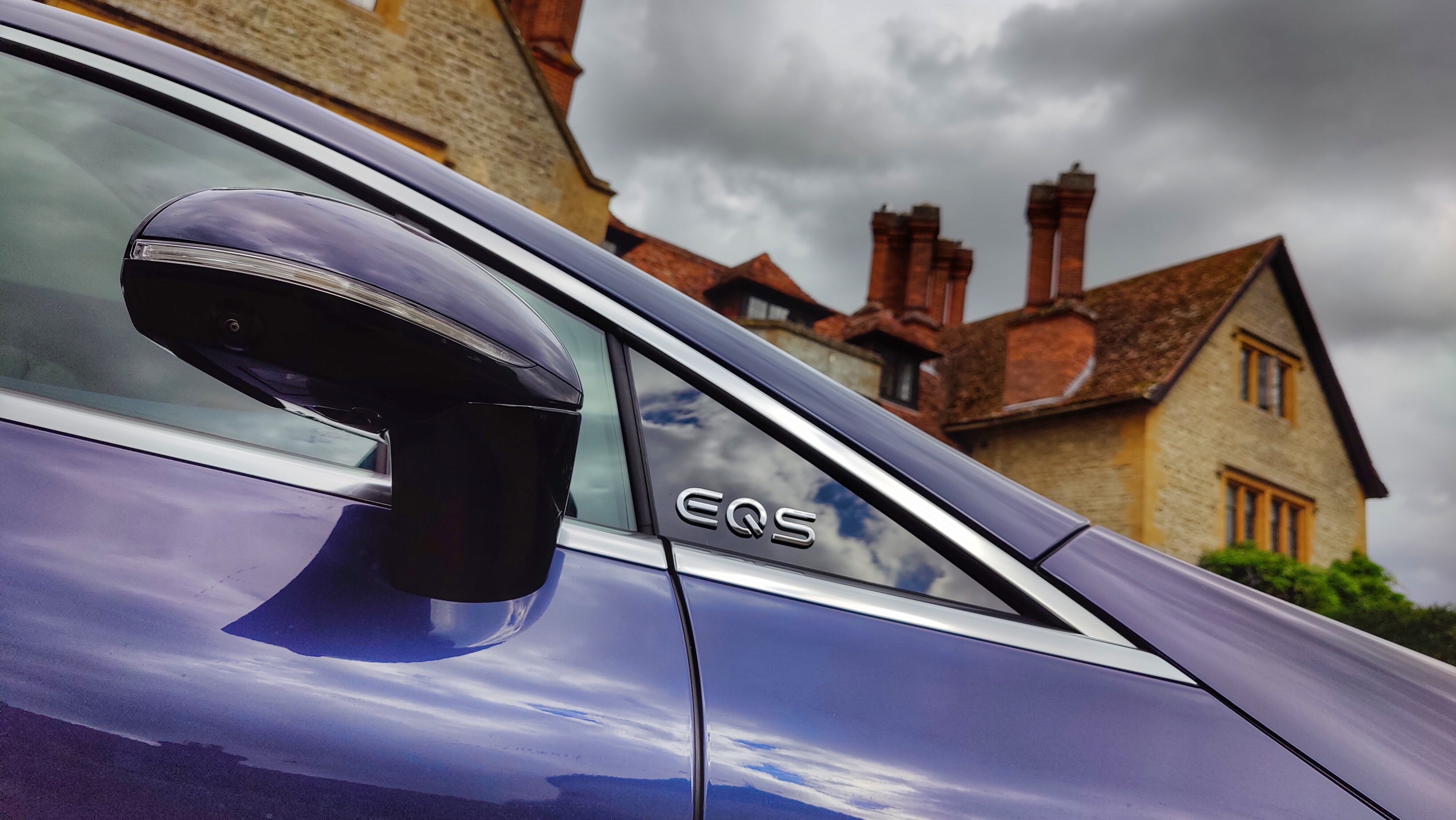
Not all HUDs are created equal, and the HUD in the EQS is the best I've come across.
HUDs (heads-up displays) project key driving information onto the windshield, allowing you to easily see things such as your speed, navigation directions and the current speed limit without having to take your eyes off the road.
They're becoming more widespread across manufacturers, and are no longer reserved for the most premium vehicles. The quality, size and range of information displayed varies between brands, but the offering in the Mercedes EQS is fantastic.
Mercedes has increased the size of the HUD to make the information shown more readable. It also allows for more data to be displayed, reducing the need to look away from the road to check things such as the time, or your estimated time of arrival at your navigated destination.
It also employs a small AR (augmented reality) feature, with blue arrows appearing to guide you into the correct lane, or to the right turning; these arrows start off small, giving you a warning that you'll need to move soon, and grow in size as you approach the point of no return.
If this is where HUDs are heading, I'm delighted.
Ports and pads a-plenty
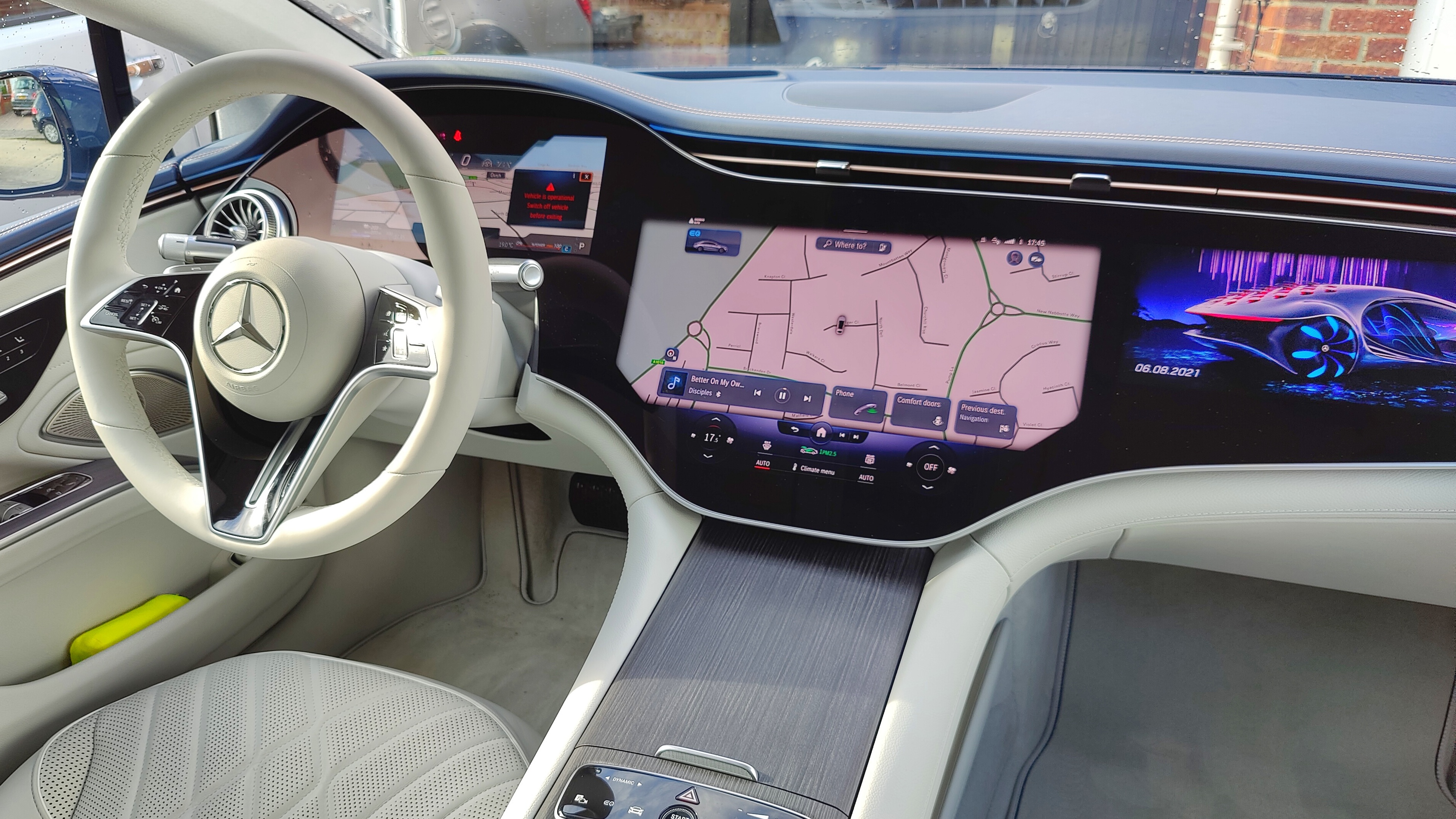
I don't like running out of battery, whether that's with an electric car or my smartphone. Thankfully, electric vehicles are only going to become better equipped to keep our devices topped up – certainly if the Mercedes EQS is anything to go by.
It has no fewer than six USB-C ports in the cabin, allowing you and your passengers to charge multiple devices simultaneously.
There's even a large space under the center console, and between the two front footwells, for your tablet. The space even has an elastic strap to ensure that your iPad (other tablets are available) doesn't slide about.
And the charging options don't stop with wired connections, as the EQS also features two wireless phone charging pads – one in the storage area beneath the central armrest, and one at the base of the center console.
With the EQS able to travel long distances with ease, and with enough space to seat four adults comfortably, the ability for everyone to stay topped-up is highly appealing.
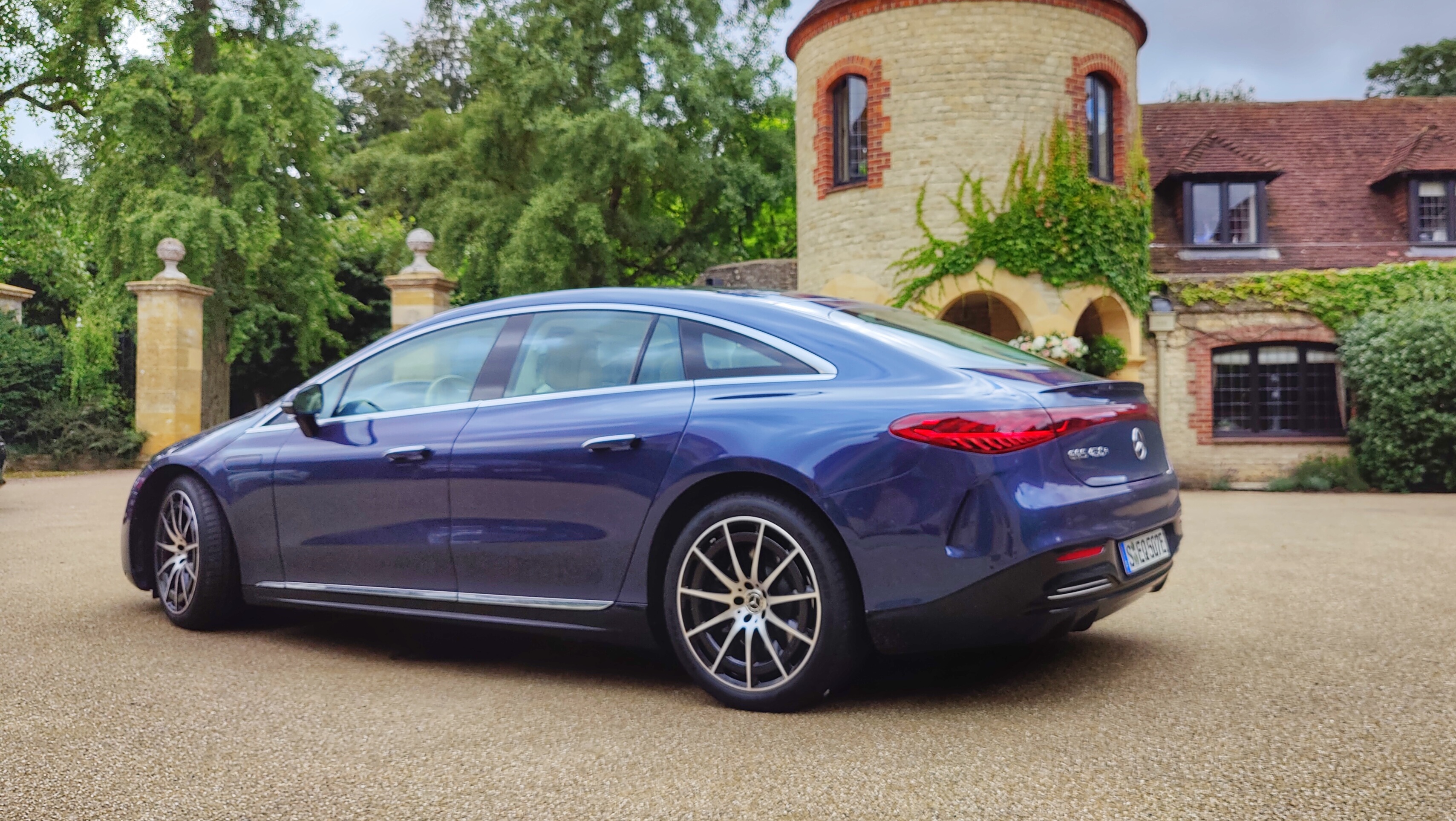
Takeaway
Make no mistake, these features aren't going to be appearing in entry-level EVs anytime soon, but in the next five years or so there's no reason why affordable electric cars won't be able to offer most – if not all – of the things I've mentioned here.
Electric cars are also helping to spur the development of the in-car technology in all vehicles, and manufacturers will continue to develop new and exciting ways for us to interact with our cars, from better, less anxiety-inducing driving experiences, to smarter, easier-to-use infotainment .
For those with deep enough pockets though, the future of electric cars isn't years away… it's a matter of months.
Contributer : Techradar - All the latest technology news https://ift.tt/3AFqWL1

 Reviewed by mimisabreena
on
Friday, August 13, 2021
Rating:
Reviewed by mimisabreena
on
Friday, August 13, 2021
Rating:














No comments:
Post a Comment